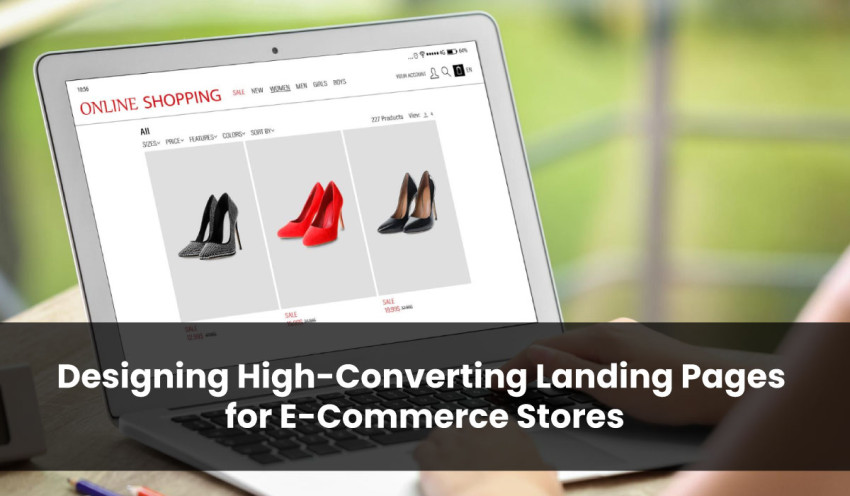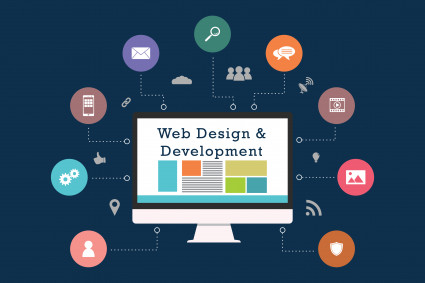
In the bustling realm of online commerce, your website's landing page acts as the virtual storefront, the first impression that can make or break a sale. Crafting a high-converting landing page is an art and a science, combining visually appealing design with strategic elements that guide visitors toward making a purchase. In this blog post, we'll delve into the essential elements and best practices for designing landing pages that not only captivate visitors but also turn them into loyal customers.
1. Understand Your Audience
The foundation of any successful landing page design lies in understanding your target audience. Conduct research to identify their preferences, pain points, and motivations. Tailor your landing page content and design to resonate with your specific audience, addressing their needs and concerns directly. Personalization creates an instant connection, making visitors more likely to engage with your offerings.
2. Clear and Compelling Headline
Your landing page headline should be clear, concise, and compelling. It should instantly communicate the unique value proposition of your product or service. Use persuasive language that addresses the visitor's problem or desire and offers a solution. A strong headline captures attention and encourages visitors to explore further.
3. Engaging Visuals
High-quality, visually appealing images and videos are indispensable for e-commerce landing pages. Use high-resolution product images and, if applicable, videos demonstrating product features or benefits. Visuals evoke emotions and help visitors envision themselves using your products, creating a powerful connection that can drive conversions, according to e-commerce store designers at Webomindapps.
4. Persuasive Copywriting
Craft persuasive and concise copy that highlights the benefits of your products or services. Focus on how your offerings solve problems or enhance the lives of your customers. Use compelling language, emphasizing key features and advantages. Break up the text into scannable sections, incorporating bullet points and subheadings for easy reading.
5. Clear Call to Action (CTA)
A clear and compelling call to action is the linchpin of a high-converting landing page. Use action-oriented language on your buttons, such as "Shop Now," "Get Started," or "Claim Your Discount." Ensure that your CTA stands out visually with contrasting colors and a prominent placement on the page. The CTA button should guide visitors toward the desired action, whether it's making a purchase, signing up, or requesting more information.
6. Trust Signals
Building trust is paramount for online shoppers. Incorporate trust signals, such as customer testimonials, reviews, trust badges, and secure payment icons, to instill confidence in your visitors. Social proof, in the form of positive feedback from satisfied customers, reassures potential buyers and lends credibility to your brand.
7. Mobile Responsiveness
With the prevalence of smartphones and tablets, your landing page must be fully responsive and optimized for mobile devices. Ensure that the design, images, and CTAs are all mobile-friendly. A seamless mobile experience is crucial, as visitors should be able to navigate, view products, and make purchases effortlessly regardless of the device they're using.
8. A/B Testing and Optimization
Creating a high-converting landing page is an ongoing process that involves continuous testing and optimization. Implement A/B tests to experiment with different headlines, visuals, CTAs, and layouts. Analyze the results to identify what resonates most with your audience. Regularly update and refine your landing page based on data-driven insights to maximize its conversion potential.
9. Fast Loading Speed
In the digital age, where attention spans are shorter than ever, a fast-loading landing page is non-negotiable. Optimize images, minimize code, and leverage caching techniques to ensure swift loading times. A delay of just a few seconds can lead to visitor frustration and abandonment. Prioritize speed to create a seamless and enjoyable user experience.
10. Streamlined Checkout Process
If your landing page leads to a product purchase, the checkout process must be as smooth and intuitive as possible. Implement a user-friendly and streamlined checkout system that minimizes steps and reduces friction. Offer multiple payment options and clearly outline the total cost, including taxes and shipping fees. A hassle-free checkout experience encourages visitors to complete their purchase and fosters customer satisfaction.
In conclusion
Designing high-converting landing pages for e-commerce stores is a multifaceted endeavor that combines creativity, user experience, and data-driven insights. By understanding your audience, employing persuasive copywriting, incorporating engaging visuals, and optimizing for mobile devices, you can create landing pages that not only captivate visitors but also drive significant conversions. Remember that continuous testing, analysis, and optimization are key to keeping your landing pages effective and in tune with the evolving needs and preferences of your audience. Embrace these best practices, and your e-commerce store will be well-positioned to thrive in the competitive online marketplace, attracting and converting visitors into loyal customers.


